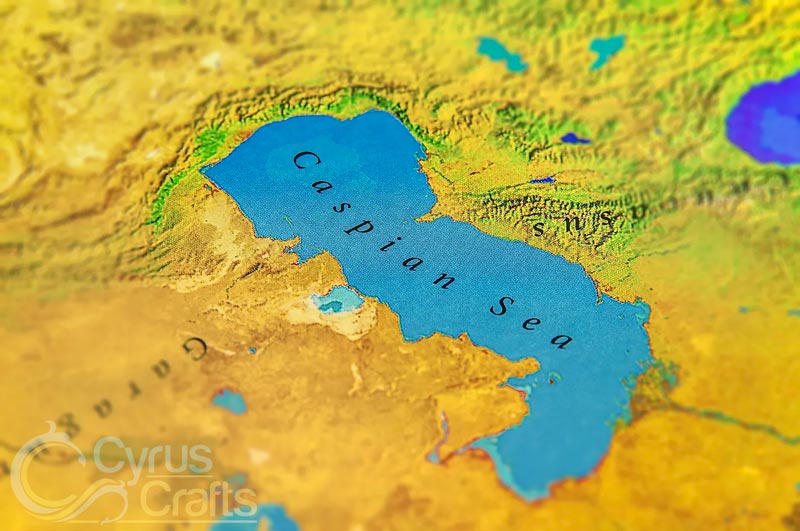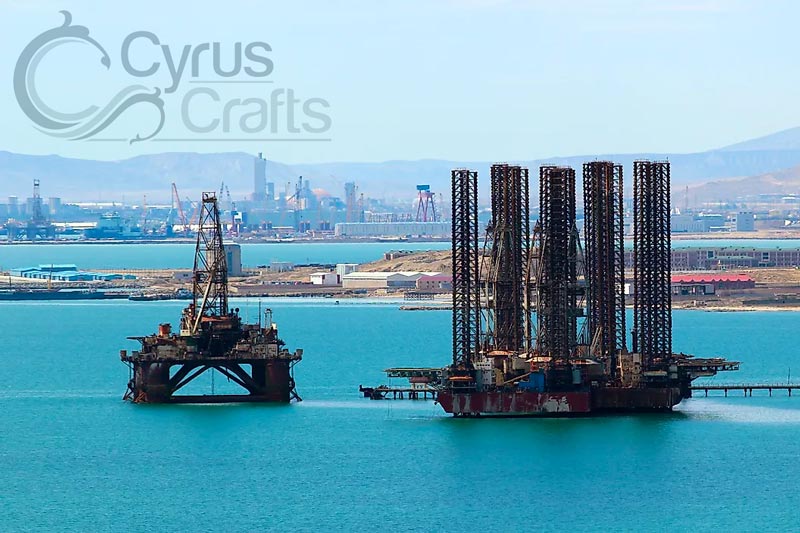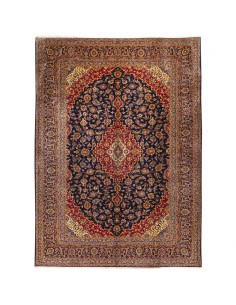- M.A
- information
- 16695 views
- 0 comments
Imagine you are on the coast, looking out to sea. In front of you lies 100 meters of barren sand that looks like a beach at low tide with gentle waves beyond. And yet there are no tides.
This is the view we see when looking at the Caspian Sea from the coast of Iran. Actually, a lake, the largest in the world, is experiencing a devastating decline in its water level that is about to accelerate. By the end of the century, the Caspian Sea will be nine meters to 18 meters lower.

The Caspian Sea, Russian Kaspiyskoye More, Persian Darya-ye Khezer, the world's largest inland body of water. It lies east of the Caucasus Mountains and west of Central Asia's vast steppe. The sea's name derives from the ancient Kaspi peoples, who once lived in Transcaucasia to the west. In addition to Khazarsk and Khvalynsk, Girkansk is derived from Girkanos, "Country of the Wolves."
Brief History of the Caspian Sea
A sea in the Tethys Ocean, the Caspian Sea was once part of the ancient Paratethys Sea. The Tethys Ocean existed over 60 million years ago and was connected to the Pacific and Atlantic oceans. The Tethys Ocean was disconnected from the two oceans following a shift in continental landforms. Much of its water evaporated, forming the Black Sea, the Aral Sea, and the Caspian.
Cyrus Crafts; Luxury & Unique Products
According to the New World Encyclopedia, archaeologists estimate that humans inhabited the area around 75,000 years ago. It was named after the Caspi Tribe, which settled on its southwest shore. According to SOCAR, small oil wells began to appear along the Caspian Sea's coast by the 10th century. By the 16th century, Europeans began traveling to the Caspian Sea to investigate the resource-rich region. Oil was first discovered offshore in 1820. Today, the oil and gas industry is prominent in the area. Other businesses include salt extraction, fishing, and tourism along the coasts.
The Map of the Caspian Sea
The following image is the map of the Caspian Sea with its neighboring countries:
.jpg)
How Salty Is the Caspian Sea?
The salinity of the Caspian Sea is about 12.8 parts per thousand on average, going from a mere 1 part per thousand near the Volga outlet to a high of 200 parts per thousand in the Kara-Bogaz-Gol, where intense evaporation occurs. There is a marked uniformity in the distribution of salinity in the open sea; the concentration increases only by 0.1 to 0.2 parts per thousand from surface to bottom.
According to GRID-Arendal, the Caspian Sea's water level has fluctuated throughout history. From the mid-19th to late 20th century, the water level varied by more than 12 feet (3.6 m). In 1977, the Caspian Sea flooded, causing extensive damage. Since then, several more floods have occurred. According to the Pars Times, the water level has risen almost 7.4 feet (2.2 m) since 1978.
Human Settlement Along the Caspian Sea
The Caspian Sea is home to several cities and towns. These cities are home to thousands of people, many of whom depend on the sea for their survival. Baku, the capital of Azerbaijan, is the largest city on the Caspian. It is home to some 2.2 million people. About 50,000 people live in Iran's Nowshahr, another important city along the Caspian. Guilan, Mazandaran and Golestan provinces include Ali Abad, Astara, Aktau, and Makhachkala.
Economy and Oil and Gas Resources of the Caspian Sea
According to European and American sources and the World Energy Organization, the total confirmed reserves of this sea include about 50 billion barrels of oil and about 260 trillion cubic feet of natural gas.
The Caspian Sea is one of the world's largest suppliers of crude oil. It produces about 1.5 million barrels of crude oil and natural gas per day, accounting for less than 2% of the world's total production.

By 1941, Azerbaijan was producing about 23 million tons of oil each year. Russia exports about two-thirds of the total oil produced in the Caspian region. The Caspian Sea is more than just a source of oil and gas: it's also an important trade route. The Caspian Sea's coastal areas also attract a significant number of tourists, generating additional income for the respective economy.
Islands In the Caspian Sea
The Caspian Sea contains about 50 small islands. These two thousand square kilometers of islands are mainly located in the North Sea.
The majority of the Caspian Sea's islands lie off the coast of Baku Bay in Azerbaijan.
The largest island in the Caspian Sea is Orguja Ada, a long, narrow desert island that runs 42 km from north to south with an average width of 1.5 kilometers.
Orguja Ada is also Turkmenistan's largest island. The island has no permanent inhabitants. Other islands in the Caspian Sea include Durneva, Chechen, Buyuk Zira, Pirallhi, Bulla, Qum, Gil, and Chikil. None of these islands are inhabited.
Plant and Animal Species of the Caspian Sea
It is home to a wide range of plant and animal species and is known for the profitable caviar and oil industries. It has herring, sturgeon, sharks, sprat, perch, pike, molluscs, and sponges.
The Caspian Sea is home to 6 species of sturgeon: the beluga caviar, Danube sturgeon (also known as osetra or Russian), red caviar, Persian sturgeon, Sterlets and Starry. In recent decades, all of these species have had their wild populations threatened by over-fishing, pollution and habitat destruction. It is only recently that conservationists have been able to celebrate a possible comeback for the Caspian sturgeon—an ancient fish once so abundant it was used as currency in Persia.
Also, the climate and weather conditions in the cities on the shores of the Caspian Sea in Iran are such that it is very common to plant and harvest crops such as rice, tea, and citrus fruits in these cities.

In this article, we tried to give short and practical explanations about the Caspian Sea and its importance for the surrounding countries like Iran. We hope these contents were helpful to you. We will be happy if we see your opinions in the comments.










Comments (0)